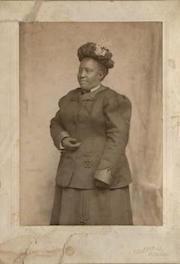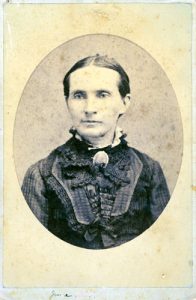“Politics in a Box” by Marie Lindhorst and “Enemies in Our Household” by Drew Faust are both articles that deal with the intersection of gender and race in the mid 19th century but from vastly and almost completely opposite viewpoints – that of a black female activist from the North and white female slaveholders from the South, respectively. The two sound entirely incompatible and in fact combative, and while neither reading delves into the opposite racial viewpoint from its subjects, the two are linked in ways that can only occur in a society with such a strong link between class and race.
Reading them back to back, there’s a sense of a tug and pull between these two groups and their relative societal power, or at least their perception of it. While the two pieces examine life at different points in the 19th century (Lindhorst’s article examines Sarah Mapps Douglass’ writings and activism in the 1830s while Faust takes a broad look at female slave owners during the Civil War in the 1860s) they still appear connected. Efforts by Douglass and her Literary Association were meant to “disprove prejudice and to challenge white belief in the intellectual inferiority of African Americans.”[3] This was at a time when, in large Northern cities, African Americans were creating social centers, such as libraries and schools, to better their race and achieve the same liberties and privileges that their white neighbors had.[4]
Contrast this with the image of white slaveholders that Faust depicts in her article. The African Americans these women have to interact with are not educated, are not writers, and most importantly are not free. Threads can be tied, however, to the rise of the abolitionist movement in the North, the education of African Americans in the same area, and the direct threat to the lifestyle these southern women would have enjoyed. “Enemies in Our Household” shows that these women were directly afraid of this lifestyle shift, and afraid of the freedom, and whatever came with it, of their previously enslaved black men and women. What they perceived as the diminishing of their role in society directly coincided with the amplification of the African American role in society, exemplified by women like Sarah Mapp Douglass. This fear was exacerbated by women being given the sole role of master of the plantation with the onset of the Civil War. Women left alone were fearful that any slights or missteps in their servants daily tasks were direct threats against them. “When her coffee tasted salty and her dinner rancid, she could not decide if her servants were attempting to poison her or just lodging a protest against their continued subjection.”[5]
Both articles have issues with vocalizing the plight of the enslaved peoples in the South – Faust only mentions them briefly and in the context of how white women needed to take up the slaveholder mantle, while Lindhorst focuses mainly on the free black women up North, who saw the exploitation of their fellow African Americans in the South as a cause to take up against. This deprives us of a valuable voice in this racial and class based struggle. However, together these two articles paint an interesting picture of the disproportionate racial divide in America during the mid 19th century and the subsequent reworking of this divide during the same time frame.
[1] Sarah Mapp Douglass, “7 African American Women Who Broke the Ceiling in Education,” https://www.accelify.com/accelify-blog/2016/02/25/7-african-american-women-who-broke-the-glass-ceiling-in-education/
[2] Portrait of Lizzie Neblett. Photograph. Briscoe Center for American History, University of Texas at Austin. http://www.cah.utexas.edu/db/dmr/image_lg.php?variable=di_00311
[3] Marie Lindhorst, “Politics in a Box: Sarah Mapps Douglass and the Female Literary Association, 1831 – 1833,” Pennsylvania History: A Journal of Mid-Atlantic Studies 65, no. 3 (Summer 1988): 269.
[4] Lindhorst, 270.
[5] Drew Gilpin Faust. 1996. “Enemies in Our Household: Confederate Women and Slavery.” In Mothers of Invention: Women of the Slaveholding South in the American Civil War, 57. North Carolina: University of North Carolina Press.


